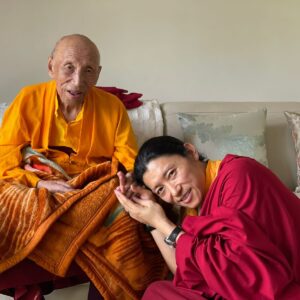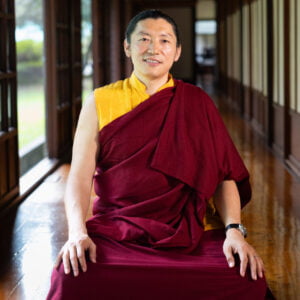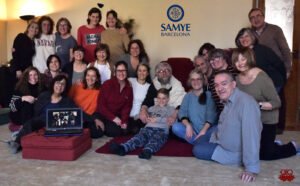Correct meditation posture helps our minds to settle and our breath to flow naturally. In traditional Buddhist texts, we read that we should cross our legs and keep our spines erect. A classic instruction is:
“[The yogi] sits down; having folded his legs crosswise, set his body erect, and established mindfulness in front of him, ever mindful he breathes in, mindful he breathes out.”
But most of us have little experience in sitting crosslegged on the floor, and many of us spend hours without thinking about correct posture. In modern life, we almost never sit with erect spines. Often we lack core abdominal strength that helps us to sit with ease in meditation. And if we can’t feel comfortable physically, we may think that meditation is painful or unpleasant. Instead, if we regularly spend a few minutes training our bodies, we gradually build the core strength that allows us to set our bodies erect and be relaxed and comfortable.
Correct Meditation Posture: It Matters!
Correct meditation posture brings us back to our cushions regularly. In our blog post, Meditation Posture: Sharpness, you can find specific instructions to help you develop correct posture.
Samye Institute asked our sangha member and physical trainer Neil Roberts for advice on reconditioning our bodies so that we can enjoyably sit in correct meditation posture:
The Deadbug: A Safe and Effective Core Exercise You Can Perform Anywhere
If I had to choose the single most effective core exercise that I use on with my athletes, clients, and my own training it would easily be the deadbug. This is a phenomenal exercise that strengthens and stabilizes all the muscles of your trunk (abs, obliques, lower back). It’s called a deadbug because when you perform the movement, you look like a deadbug with its legs up in the air. Despite the funny name, this is a serious yet simple exercise that will improve your posture, prevent pain, tighten your midsection, and help you learn to breathe more efficiently. Moreover, for meditators, these elements make it easier to settle into correct meditation posture.
This exercise has become popular mostly due to the research of the world’s leading back pain specialist Dr. Stuart McGill. Rather than performing exercises like crunches and sit-ups, which require you to flex your trunk (round your back), Dr. McGill and other elite experts advocate training the abdominals to resist extension to protect your lower back. “Resisting extension” is what makes this exercise functional, because it teaches you to isolate the movement through your hips and shoulders without moving the spine. Too much spinal movement caused by weak abdominals exposes you to high injury risk.
The deadbug helps to fix many of the common compensation patterns that happen through the spine when we move our hips and shoulders. Most notably, we tend to overuse our lower back when moving our hips, and we overuse our rib cage when moving our shoulders. These compensations are especially prominent in those of us that spend long hours sitting at a desk, which often causes anterior pelvic tilt (aka a swayback). So let’s learn how to fix all this by using the highly effective deadbug.
If we practice deadbug consistently, we will find that sweet spot of correct meditation posture!
The Deadbug—How To
- Lie on your back with your arms extended in front of your shoulders.
- Bend your hips and knees to a 90-degree angle.
- Tighten your abs and press your lower back into the floor.
- Take a deep breath in.
- As you exhale, slowly extend your left leg toward the floor and bring your right arm overhead. Keep your abs tight and don’t let your lower back arch.
- Slowly return your arm and leg to the starting position.
- Repeat with your opposite arm and leg. Continue alternating.
Video Demonstration
Sets/Repetitions: I’ll typically shoot for 2-3 sets of 5-8 repetitions per side.
When: You can practice this anytime to help strengthen the core. It’s gentle enough to do every day. They make a great warm up before a workout or a run, as well as a nice core finisher at the end of any physical activity.
You Should Feel: Your abdominals working hard to control the movement. If you are trembling, you are doing it right!
You Shouldn’t Feel: Any pain in the lower back or hips. If you feel any pain, shoot me an email.
Read More
- Destress With Alternate Nostril Breathing
- Ayurveda: Introduction to the Five Elements and Interconnection
- Meditation Posture: Sharpness
- Tibetan Medicine: An Introduction










Responses